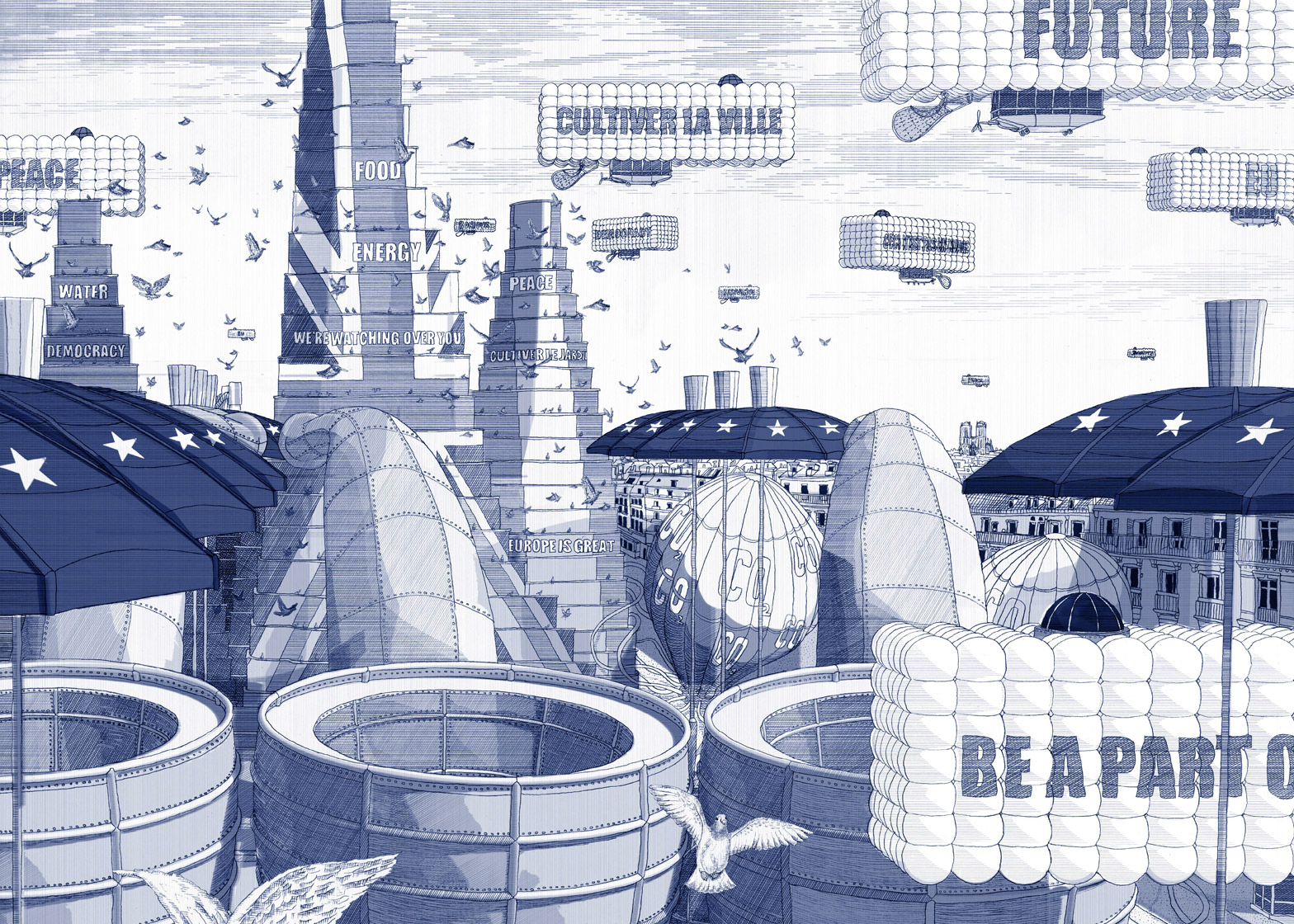EU referendum: Architecture student Steven McCloy has reimagined the European Union as a nomadic organisation that moves to a new city every five years.
The conceptual project, entitled European Union: The Gardens of Fantastica, imagines the EU as a moving institution, able to transform the economy and infrastructure of every city it visits.
It aims to remove the stigma around the idea of sending money to the EU headquarters in Brussels, and instead highlight the potential of the organisation to combat global issues such as climate change and the growing demand for food.
McCloy completed the project as part of his graduation project from the MArch course at the Bartlett School of Architecture in 2013, but is now using it to encourage UK citizens to vote to remain in the EU referendum later this week.
"I am convinced of the importance of collaboration and standing together in the face of adversity," explained McCloy, who is currently completing his studies at London firm Allford Hall Monaghan Morris.
"Being a leader in the future of the EU is important to the economy, food security and political influence of Britain and there is a major significance in being part of a collaborative region that is capable of exchanging ideas," he told Dezeen.
In a series of intricate drawings, McCloy has envisioned a parliamentary headquarters for the EU in Paris, temporarily located inside an Eiffel Tower that is screened behind a hanging curtain of growing food.
His futuristic proposal includes cloud-like umbrellas that would provide clean water, dense allotments, and apple-shaped digesters that would recycle waste, including pigeon droppings collected from huge towers.
An underground reservoir would purify river water, creating a moat that MEPs traverse in umbrella boats, while a frozen bridge would be created across the Seine, as a by-product of water-sourced heat pumps.
After five years, he suggests, the institution would move to a new city, leaving behind a legacy of investment into agriculture, renewable energy, clean water and fresh air.
McCloy sees the project as a critique of the way the European Union has operated so far. He believes it could be far more imaginative, in the spirit of architects like Baron Haussmann and Le Corbusier.
"The referendum is so important because, whichever way we go, it'll be a major turning point for the country and for all other EU member states," said McCloy.
"If we vote to remain, which I hope we will, there must be a vast improvement in our elected representatives. They must have the aspiration to become leaders and progress the institution."
"As architects and designers our most important skills lie in our ability to conceive of future buildings, cities and their contexts," he added.
"Whether today's architect still has the energy to be imaginative or provocative isn't apparent. But with an exit from the EU, a more domestic, inward-looking and right-wing future promises to defeat any optimism about the value of architecture. I don’t think that's the future I went to school for."
The campaign for the UK to remain a member of the EU has already received backing from a host of high-profile architects, designers and artists, including David Chipperfield, Ron Arad, Richard Rogers, David Adjaye and Thomas Heatherwick.
Recent surveys have revealed that 90 per cent of British fashion designers will vote to remain and that 96 per cent of Creative Industries Federation members want to stay in the EU.
McCloy completed European Union: The Gardens of Fantastica as part of Unit 10 at the Bartlett School of Architecture in London.
Led by CJ Lim and Bernd Felsinger, it is the school's most drawing-focused programme. Recent projects to come out of the unit include a water city in Israel where Jewish and Muslim communities live peacefully together and a vision for recreating spring in Tokyo.

